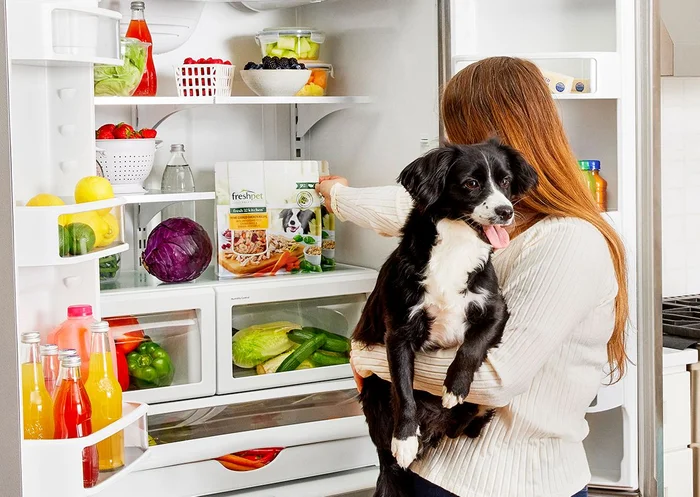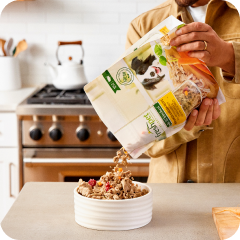
Ask Dr. Aziza: Things To Start Doing To Help Your Dog Live a Long and Happy Life
written by Ellie Walker
While most pet parents would argue that anything short of forever isn’t long enough, our dogs are actually living lives that are longer and healthier than ever before. We may not have forever with them, but there are a few things you can do to help your dog maintain a good quality of life for as many years as possible.
Focus on nutrition
Like humans, nutrition plays a crucial role in our pet’s health. This means it’s important to have a well-balanced diet that is full of high-quality ingredients and nutrients. When choosing a diet for your pet, there are three key questions you should ask yourself:
- Is this diet appropriate for their breed?
- Is this diet appropriate for their size?
- Is this diet appropriate for their age?
Freshpet is a great, healthy dog food choice because it offers recipes that are full of the vital nutrients they need to maintain their health through all stages of life. They offer a wide range of choices, but I recommend trying the Freshpet® Select Puppy Recipe with Chicken, Freshpet® Select Sensitive Stomach and Skin, or Freshpet® Select Fresh from the Kitchen™ Home Cooked Chicken recipe – which is also packed with antioxidants from cranberries!
Schedule annual and bi-annual exams
It’s important to be consistent with your pet’s exams. Exams are great ways to make sure your pet is up-to-date on standard wellness care like vaccinations as well as annual or biannual bloodwork panels. Depending on your pet’s age, your veterinarian may recommend bloodwork once or twice a year. This allows your veterinarian to have a greater chance of identifying and treating diseases earlier, increasing the probability of a successful response to treatment.
Monitor chronic diseases
If your pet has a chronic disease like diabetes mellitus or hypothyroidism, don’t fret. Most pets live a good quality of life with good management of chronic diseases. Depending on the chronic disease, your veterinarian may recommend that you follow an adjusted exam schedule so instead of once or twice a year, you come more often. This will enable them to be consistent with testing that helps to monitor the disease and alert your veterinarian if the dosage of medications needs to be adjusted.
Keep on top of their dental health
Unfortunately, over 80% of pets have some stage of dental disease. It’s not normal for your pet to have horrible breath or for their teeth to look like they are rotten – both of these are key indicators of periodontal disease. If left untreated, periodontal disease can lead to issues such as:
- Oral pain
- Decreased eating
- Unintended weight loss
- Bad breath
- Contribute to systemic diseases
Depending on the recommendation of your primary care veterinarian, you can expect to have dental cleanings scheduled once to twice a year. To be even more effective and hands-on in your pet’s dental health, however, you can also start to brush their teeth at home twice a day. It can take a while to work up to that frequency, so to start, try cleaning their teeth a minimum of twice a week and increasing it from there. If this is the first time you’ve done this, take a look at our tips for brushing your dog’s teeth at home.
Tackle pet obesity
Aside from periodontal disease, one of the biggest diseases veterinarians see today is pet obesity. In fact, approximately 25-30% of pets are considered obese. Like humans, obesity increases the probability of pets developing serious diseases like diabetes mellitus or worsening conditions like osteoarthritis. Be observant of your pet’s weight and work with your primary care veterinarian or a veterinary nutritionist to create a weight loss plan to get your pet to an ideal weight.
Talk to your veterinarian about pain management
If your pet has recurring lameness, they are likely to be in pain every day, even when it is not noticeable. This could be due to a previous injury or osteoarthritis, but regardless of the cause, it’s important to remember that pets don’t always show pain. They are pretty resilient creatures, but they deserve to be as comfortable as possible. A great way for your pet to live a longer life is to speak to their veterinarian about what level of pain management is adequate for their needs. Thankfully, there are many different options for pain management that your vet can walk you through, such as:
- Acupuncture
- Pain medication
- Laser therapy
Invest in pet insurance
One of the things pet parents often deal with is the high unexpected costs of veterinary care and these out-of-pocket expenses can put a financial strain on the family. The closest thing we have to medical insurance for our pets is pet insurance. Take the time to research which provider and type of plan are ideal for your needs, financially and otherwise.
















